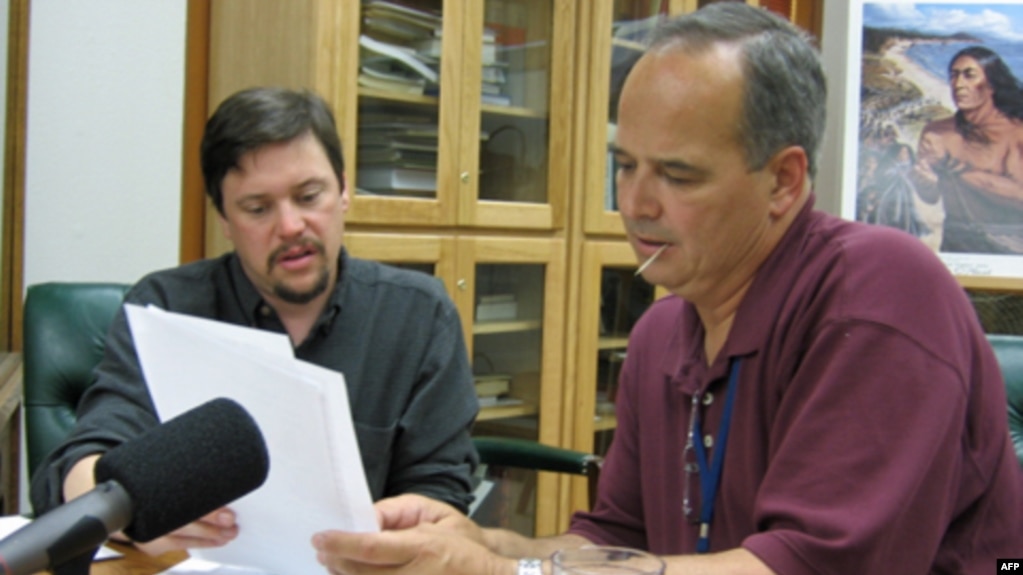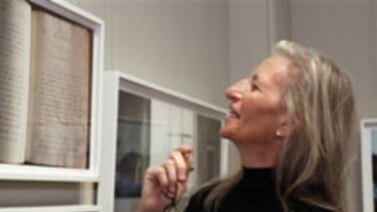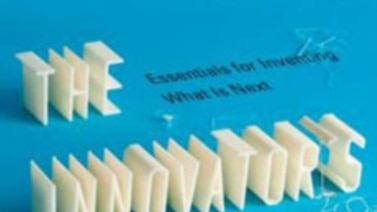
BARBARA KLEIN: Welcome to THIS IS AMERICA in VOA Special English. I’m Barbara Klein.
BOB DOUGHTY: And I’m Bob Doughty. This week on our program, we look at efforts to protect threatened languages. And, later, we hear some songs about baseball.
(MUSIC)
BARBARA KLEIN: Eleven of the world's languages have at least one hundred million native speakers. The biggest are Mandarin Chinese, English, Spanish, Arabic and Hindi. Next come Portuguese, Bengali, Russian, Japanese, French and German. The United Nations says these eleven languages are the mother tongues of half the world's population.
But the world has close to seven thousand languages. Linguists predict that as many as half of these may be at risk of disappearing by the end of this century. That would mean another language dies every two weeks.
BOB DOUGHTY: Members of the Siletz Indian tribe in the northwestern state of Oregon take pride in their language. Their language, they say, "is as old as time itself." But today very few people can speak it fluently. In fact, you can count the number of fluent speakers on one hand. Bud Lane is one of them.
BUD LANE: "We had linguists that had come in and done assessments of our people and our language and they labeled it -- I'll never forget this term -- 'moribund,' meaning it was headed for the ash heap of history."
The Siletz tribal council did not want to let that happen. So Bud Lane asked for help from experts. Several National Geographic Fellows helped him record fourteen thousand words and phrases in his native tongue.
TALKING DICTIONARY: "Let's dance out in front: ch’ee-naa-svt-nit-dash."
Some Siletz words describe basket making, a traditional tribal art.
TALKING DICTIONARY: "Baby basket: guy-yu." "Baby basket laces: guy-yuu mvtlh-wvsh."
More than ten thousand entries can be found in the Siletz Online Talking Dictionary, first launched in two thousand seven. The website, siletz.swarthmore.edu, is hosted by Swarthmore College in Pennsylvania.
David Harrison is a linguistics professor there. Professor Harrison has also posted talking dictionaries for seven other highly endangered languages from around the world. He says technology can spread the influence of major languages but also help save endangered ones.
DAVID HARRISON: "This is what I like to call the flip side of globalization, or the positive value of globalization. We hear a lot about how globalization exerts negative pressures on small cultures to assimilate."
BARBARA KLEIN: Smartphone apps, YouTube videos and Facebook pages have all become digital tools for language activists and experts.
Mr. Harrison and a researcher in Oregon have mapped areas of endangered languages. One is the Pacific Northwest in the United States. Others include the upper Amazon basin, Siberia and northern Australia.
In Canada's far north, the Inuit people are struggling to preserve their native language, Inuktitut. Part of the effort involves Microsoft. The company is translating terms in its Windows operating system and Office software into Inuktitut. Gavin Nesbitt is the project leader.
GAVIN NESBITT: "Instead of 'file,' you'll see ini. Instead of 'home,' it will say pigiarvik. Instead of 'save,' it says 'jaggajairli' and stuff like that."
He says the programming group had to invent new words to include all the terms in some Windows and Word document menus. But he says the effort is worth it.
GAVIN NESBITT: "So many people will spend their entire day sitting in front of a computer. If you're sitting in front of your computer in English all day, that just reinforces English. If you're now using Inuktitut, it is reinforcing [that] this is your language."
Microsoft has also worked with language activists in New Zealand, Spain and Wales to translate its software into Maori, Basque, Catalan and Welsh.
BOB DOUGHTY: In Oregon, Siletz language teacher Bud Lane says technology alone cannot save endangered languages.
BUD LANE: "Nothing takes the place of speakers speaking to other speakers and to people who are learning. But this bridges a gap that was just sorely needed in our community and in our tribe."
He points to one sign of progress: young members of the tribe are now texting each other in Siletz.
(MUSIC)
BARBARA KLEIN: The twenty-twelve Major League Baseball season is in, yes, full swing. The sport has long been a hit with songwriters. In fact, baseball has been celebrated in song almost since the first pitch was thrown out. "The Baseball Polka" was written in the late eighteen fifties.
Over the years, Irving Berlin and Bruce Springsteen have written songs about baseball. Singers as different as Frank Sinatra and Meat Loaf have sung about the game.
(MUSIC)
BOB DOUGHTY: Mandolin player and singer Sam Bush is a huge fan of his favorite team, the Saint Louis Cardinals. His album "King of My World" includes a song he wrote called "The Wizard of Oz." The song is about Ozzie Smith, a former Cardinal great who played shortstop and did backflips on the field.
(MUSIC)
BARBARA KLEIN: Ozzie Smith is in the Baseball Hall of Fame in Cooperstown, New York. Bob Dylan wrote a song about another Hall of Famer: Jim "Catfish" Hunter. Catfish Hunter was one the best baseball pitchers ever, and one of the most popular. His fifteen-year career included five World Series championships with the Oakland Athletics and the New York Yankees.
He once pitched a perfect game, not allowing a single opposing player to reach base. He also pitched five seasons in a row with twenty victories. But Catfish Hunter is also remembered for another reason.
On December thirty-first, nineteen seventy-four, he signed a contract with the Yankees worth almost four million dollars. That might not sound like very much with today's highly paid star athletes. But the contract set a record. It made Catfish Hunter the first multi-millionaire player in baseball -- the "million-dollar-man" as Bob Dylan called him. The contract was for five years but he retired early.
Catfish Hunter died in nineteen ninety-nine. If you ever visit the Baseball Hall of Fame, you might see Bob Dylan’s signed album featuring the song "Catfish."
(MUSIC)
BARBARA KLEIN: Singer-songwriter Chuck Brodsky likes to include baseball songs on his albums. One song tells the story of a real-life player on the Brooklyn Dodgers, before they moved from their New York home to Los Angeles. Moe Berg lived a double life: baseball player and spy for the United States before and during World War Two. Here is "Moe Berg: The Song."
(MUSIC)
BOB DOUGHTY: One baseball song is in a league by itself. People may not know all the words, but that never stopped anyone from singing along with "Take Me Out to the Ballgame." A few years ago, Sam Bush had a chance to play it during the seventh inning stretch at a Cardinals game. The seventh inning stretch is a time for fans to get out of their seats to stretch their arms and legs after sitting for most of the game.
Sam Bush says he will never forget hearing thousands of fans singing along as he played his version of the song on his mandolin.
(MUSIC:)
Jack Norworth wrote "Take Me Out to the Ballgame" in nineteen eight. One day he was riding a New York City subway train and saw an advertisement for a baseball game. That gave him the idea for the most famous baseball song ever written. Not bad for someone who had never even been to a major league game.
(MUSIC)
BARBARA KLEIN: Our program was produced by Brianna Blake with reporting by Tom Banse and Katherine Cole. I’m Barbara Klein.
BOB DOUGHTY: And I’m Bob Doughty. Read, listen and learn English with texts and MP3s of our programs at voaspecialenglish.com. Join us again next week for THIS IS AMERICA in VOA Special English.





